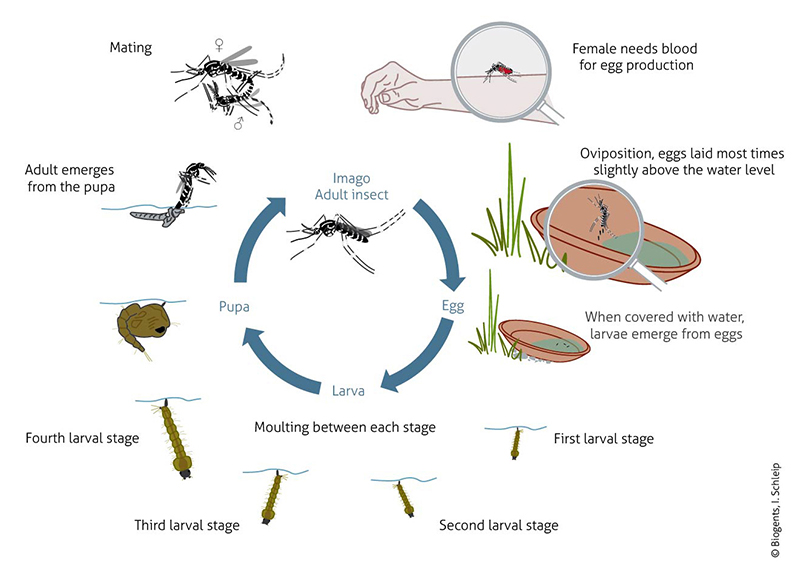Mosquito
Mosquitoes: Tiny Insects, Big Impact
Mosquitoes belong to the order Diptera, commonly referred to as True Flies. Despite their small size, mosquitoes have a significant influence on global health and ecosystems. Below is a detailed look into their anatomy, behavior, life cycle, and control methods.
Anatomy and Behavior
Both male and female mosquitoes primarily feed on nectar and plant sap. However, female mosquitoes need a blood meal to reproduce, making them the culprits behind bites. They usually feed at dawn, dusk, and night, though some species may bite during the day if disturbed. When feeding, mosquitoes can transmit dangerous diseases such as malaria, dengue, Zika virus, chikungunya, yellow fever, and more. These diseases spread through the saliva injected during feeding.
With global warming, mosquito populations are projected to increase, expanding their habitats and disease-carrying potential. Reducing stagnant water sources, which serve as breeding grounds, is one of the most effective ways to control mosquito populations.
Species Diversity
There are over 3,000 species of mosquitoes globally, with a few being responsible for disease transmission. The most notable species include:
- Aedes sp. (responsible for dengue, Zika, and yellow fever)
- Anopheles sp. (the primary vector for malaria)
- Culex sp. (known for transmitting encephalitis and filariasis)
Adult mosquitoes typically measure between 3 to 16 mm in size, with long, slender bodies and delicate legs. Their colors range from gray to dark brown, often featuring white, silver, or green scales. Male mosquitoes are easily recognizable by their feathery antennae and non-biting mouthparts.
Life Cycle
Mosquitoes undergo a complete metamorphosis consisting of four stages: egg, larva, pupa, and adult. This life cycle takes about 40-42 days, particularly in tropical climates. Males generally live for around a week, while females can survive for 1-2 months. Mating occurs shortly after reaching adulthood, with males forming swarms to attract females during dusk.
The egg-laying behavior varies across species:
- Anopheles sp. lay eggs singly on the surface of water.
- Culex sp. lay eggs in raft-like clusters on water bodies.
- Aedes sp. prefer semi-dry locations, where eggs remain dormant until triggered by rising water levels.
Breeding Sites
Mosquitoes adapt well to a variety of aquatic habitats, from ponds and drainage ditches to tree holes and artificial containers like buckets or tires. They tend to avoid large bodies of flowing water, preferring stagnant or slow-moving water to lay eggs. Mosquitoes’ flight range depends on factors such as species, temperature, and wind conditions.
Regularly inspecting and eliminating breeding sites is key to effective mosquito control. By treating or removing stagnant water, you can significantly reduce mosquito populations and limit the spread of diseases.
Conclusion
Mosquitoes, though small, have an outsized impact on human health and well-being. Understanding their behavior and life cycle is crucial for controlling populations and preventing disease. Through proactive control measures, we can protect our homes and communities from these harmful pests.

